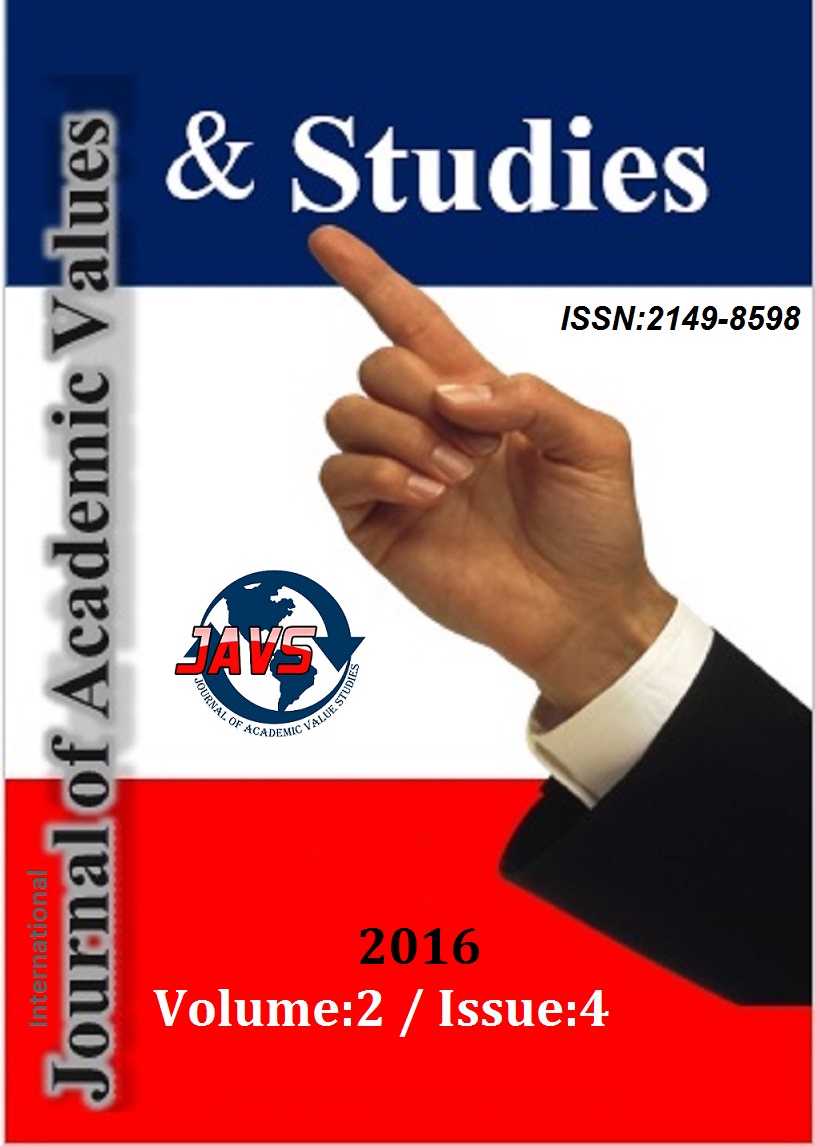Author :
Abstract
1990'larda birçok ülkede yüksek enflasyon sorununun ortaya çıkması, enflasyon hedeflemesi adı verilen bir para politikası stratejisinin geliştirilmesine zemin hazırlamıştır. Enflasyon hedeflemesi, merkez bankasının gelecekteki enflasyon hedefini kamuoyuna açıkladığı bir çerçevedir. Enflasyon hedeflemesi rejimi kapsamında kısa vadeli faiz oranlarının belirlenmesinde sıklıkla başvurulan yöntem Taylor Kuralı’dır. Taylor Kuralı, Merkez bankası politika faizlerini hedeflenen enflasyon ve çıktı potansiyelinde sapmasına göre belirlenmesini ön gören bir para politikası kuralıdır. Bu çalışmada, enflasyon hedeflemesi stratejisini uygulayan seçilmiş ülkelerde 2001-2020 dönemi için enflasyon oranı ve faiz oranının yanı sıra döviz kurunun da bulunduğu genişletilmiş Taylor Kuralı’nın geçerliliği panel veri yöntemleri kullanılarak tahmin edilmiştir. Genişletilmiş Taylor kuralına göre, nominal faiz oranları üzerinde, enflasyon açığı, çıktı açığı tepki katsayısının da pozitif olması, kur tepki katsayısının sıfır olması beklenmektedir. Ekonometrik analiz sonuçları seçilmiş ülkeler için enflasyonu kontrol etme noktasında faiz oranının önemli bir araç olduğu yönündeki Taylor kuralını desteklenmektedir. Bununla birlikte döviz kuru açığının katsayısı her iki dönemde negatif bulunmuştur. Ekonometrik sonuçlar, seçilmiş ülkeler faiz politikasını belirlerken enflasyon açığını, çıktı açığını dikkate aldığını, ancak döviz kuru açığını dikkate almadığı göstermektedir.
Keywords
Abstract
In 1990s, the emergence of high inflation problem in many countries provided a ground for developing a strategy of monetary policy termed inflation targeting. Inflation targeting is a framework, in which central bank explained its next inflation target to public opinion. In the scope of inflation targeting regime, the most used method in determining short term interest rates is Taylor Rule. The Taylor rule is a monetary policy rule that foresees Central bank policy rates determined by deviating from targeted inflation and output potential. In this study, the validity of the augmented Taylor rule including the inflation rate and interest rate as well as the exchange rate, was estimated with panel data methods in selected countries implementing the inflation targeting strategy. According to the augmented Taylor rule, the elasticity coefficients of inflation and output gap on nominal interest rate is expected to be positive and exchange rate elasticity coefficient is expected to be zero. The results of the econometric analysis provide the validity of the Taylor rule implying that the interest rate is an important tool in controlling inflation for selected countries. However, the elasticity coefficient of the exchange rate gap was negative for all sample countries. The econometric results show that when determining interest rate policy, in the selected countries take into account the inflation and the output gap except the exchange rate gap.
Keywords
- Basilio, J. (2013). The Empirics of Monetary Policy Rules: The Taylor Rule in Different Countires. PhD Thesis.
- Bhattarai, K., & Carter, M. (2018). An empirical analysis of the taylor rule and its application to monetary policy: A case for the United Kingdom and Euro Area. Asian Journal of Economics and Empirical Research, 5(2), 173-182.
- Beckworth, D., & Hendrickson, J. R. (2020). Nominal GDP targeting and the Taylor rule on an even playing field. Journal of Money, Credit and Banking, 52(1), 269-286.
- Binici, M., (2011). The Role of Exchange Rates in Monetary Polıcy Rule: The Case of Inflation Targeting Countrıes. International Journal of Economics and Finance Studies, 3( 2): 181-192.
- Castro, V. (2011). Can central banks’ monetary policy be described by a linear (augmented) Taylor rule or by a nonlinear rule?. Journal of Financial Stability, 7(4), 228-246.
- Chaouech, O. (2015). Taylor Rule in Practice: Evidence from Tunisia. MPRA Paper No. 74942.
- Chatelain, J. B., & Ralf, K. (2020). Ramsey optimal policy versus multiple equilibria with Fiscal and Monetary interactions. arXiv preprint arXiv:2002.04508.
- Coşar, K., & Nezir, K. Ö. S. E. (2019). Zamanla Değişen Parametreli Genişletilmiş Taylor Kuralı: Türkiye için Finansal İstikrarın Rolü. İstanbul Gelişim Üniversitesi Sosyal Bilimler Dergisi, 6(1), 1-17.
- Fournier, J. M., & Lieberknecht, P. (2020). A Model-based Fiscal Taylor Rule and a Toolkit to Assess the Fiscal Stance. International Monetary Fund.
- Galindo, L. M., & Catalán, H. (2005). The Taylor Rule and the Exchange Rate in Mexico (an empirical appraisal). Revista Mexicana de Economía y Finanzas Nueva Época REMEF (The Mexican Journal of Economics and Finance), 4(2).
- Kurihara, Y. (2016). Taylor Rule During the Zero or Low Interest Rate Era: The Recent Japanese case. Applied Economics and Finance, 4(1), 1-8.
- Malikane, C., & Willi S., (2008). The Role of Exchange Rate in Monetary Policy Rules: Evidence from a Dynamic Keynesian Model. In: Working Paper Series of the New School - Comparative Empirical Macroeconomics: 1-9.
- Mangır. F. (2018). Analyzıng Monetary Polıcy Regardıng Interest Rate, Inflatıon and Output Gap: Evıdence From Turkey (2006-2018). Eurasian Academy of Science Social Sciences Journal, 22(58-68)
- Montagnoli, A., & Napolitano, O. (2005). Financial Condition Index and interest rate settings: a comparative analysis. Istituto di Studi Economici Working Paper, 8, 2005.
- Ostapenko, N. (2020). Taylor Rule: The Information Content From FOMC Transcripts. Available at SSRN 3597187.
- Ostry, M. J. D., Ghosh, M. A. R., & Chamon, M. M. (2012). Two Targets, Two Instruments: Monetary and Exchange Rate Policies in Emerging Market Economies. International Monetary Fund.
- Santacreu, A. M. (2015). Monetary Policy in Small Open Economies: The Role of Exchange Rate Rules. Federal Reserve Bank of St. Louis Review, 97(3): 217-32.
- Taylor, J. B. (1993). Discretion Versus Policy Rules in Practice. Public Policy, 39, 195-214.
- Taylor, J. B. (2001). The Role of the Exchange Rate in Monetary-Policy Rules. American Economic Review, 91(2), 263- 267.
- Yalçınkaya, Ö., & Yazgan, Ş. (2020). Taylor Kuralı Kapsamında Türkiye Cumhuriyet Merkez Bankası Para Politikası Tepkilerinin Belirlenmesi: Doğrusal ve Doğrusal Olmayan Zaman Serisi Analizi (2002: Q1-2019Q: 2). Akdeniz İİBF Dergisi, 20(1), 35-65.
- Zayed, N. M. (2018). Testıng Taylor's Rule to Examıne Monetary Polıcy Regardıng Bank Rate, Inflatıon and Output Gap of Bangladesh: 1972-2016. Academy of Accounting and Financial Studies Journal, 22(1), 1-11.
- Zhang, X., & Pan, F. (2019). The dependence of China’s monetary policy rules on interest rate regimes: Empirical analysis based on a Pseudo output gap. Sustainability, 11(9), 2557.
